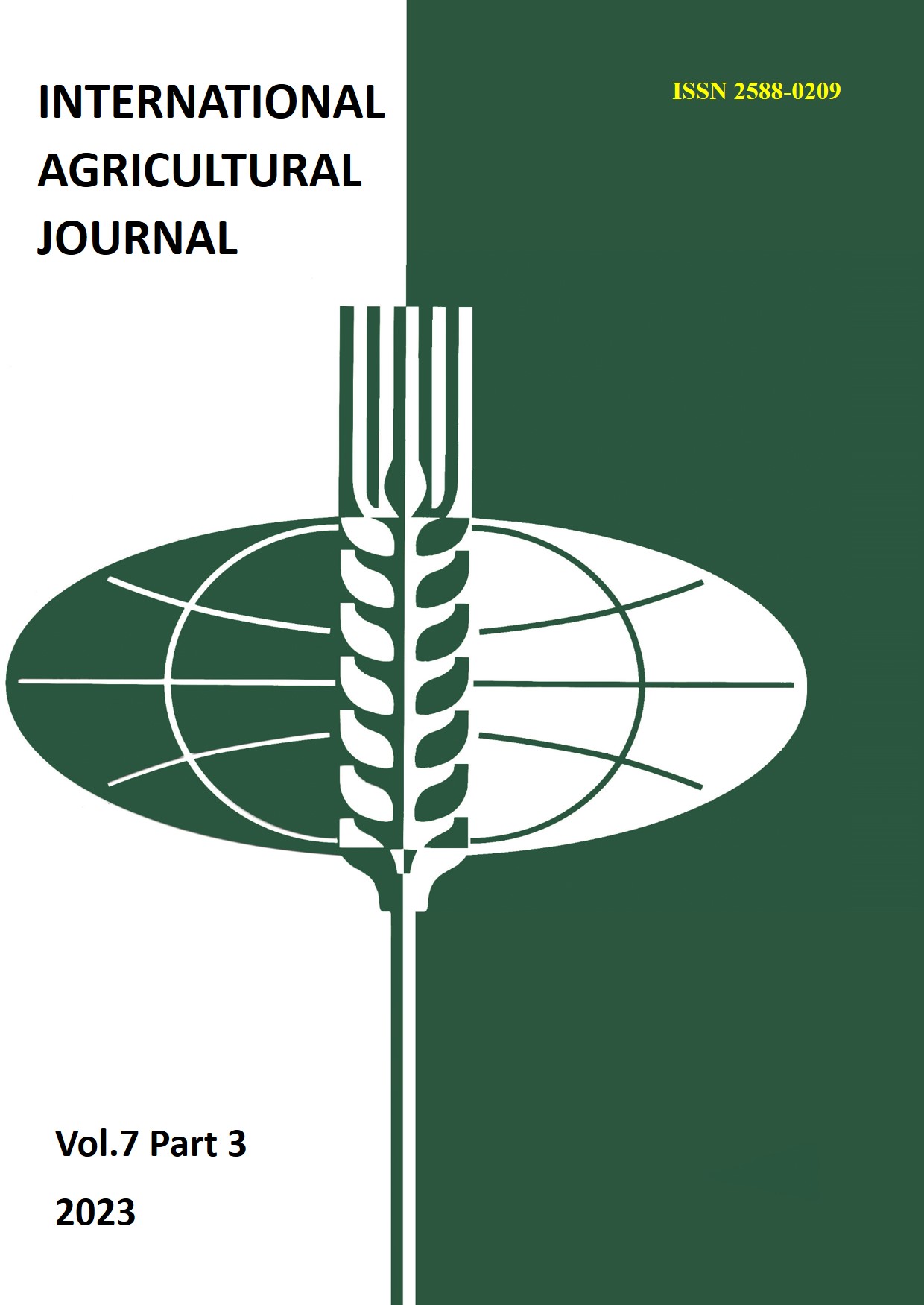ANALYSIS OF FLORA IN THE MAN-MADE TERRITORY IN THE SURROUNDINGS OF THE CITY OF SARATOV
Main Article Content
Abstract
The article presents an analysis of the flora of the technogenic territory located in the vicinity of the city of Saratov in close proximity to industrial enterprises. The study of flora was carried out in the period from 2019 to 2021. The number of species of the Asteraceae family in the surveyed area, the dynamics of species diversity were determined. The total number of species of the family in the last year of the study was 58 species from 34 genera. A biomorphological and systematic analysis was carried out. He showed that the family in the technogenic territory has been represented for several years by a complex of ruderal species and representatives of natural plant communities. The ratio between them is 44.83% and 55.17%. The life forms of the representatives of the family are diverse. However, it is important for rod-rooted perennials, biennials, annuals. The revealed ratio of species by hygromorphs and trophomorphs indicates favorable conditions for soil nutrition and moisture, despite the impact of anthropogenic factors. Systematic analysis has shown that the flora of Asteraceae is represented not only by species that occur commonly and frequently, but also by those that occur occasionally and rarely.
Article Details
References
2. Vasilyeva N. V. Some features of the leafy (Bidens frondosa L.) succession that contribute to its resettlement // Proceedings of the Samara Scientific Center of the Russian Academy of Sciences. 2011. V.13. No. 5. S. 72-78.
3. Vinogradova Yu. K., Maiorov S. R., Khorun L. V. Black book of the flora of Central Russia: alien plant species in the ecosystems of Central Russia. Moscow: GEOS, 2010. 512 p.
4. Grigorievskaya A. Ya., Lepeshkina L. A., Zelepukin D. S. Flora of the Voronezh urban district of the city of Voronezh: biogeographic, landscape-ecological, historical aspects // Samarskaya Luka: problems of regional and global ecology. 2012. V.21. No. 1. S. 5-158.
5. Elenevsky A. G., Bulany Yu. I., Radygina V. I. Synopsis of the flora of the Saratov region. - Saratov: Publishing Center "Nauka", 2008. 232 p.
6. Red Book of the Saratov region: Mushrooms. Lichens. Plants. Animals / Ministry of natural resources and ecology of the Saratov region. - Saratov: Papyrus. 496 p.
7. Matveev N. M. Bioecological analysis of flora and vegetation (on the example of the forest-steppe and steppe zones): textbook. Samara: Samara University Publishing House, 2006. 311 p.
8. Mayevsky P. F. Flora of the middle zone of the European part of Russia. 10th ed. M: T-vo scientific editions of KMK, 2006. 600 p.
9. Mayevsky P. F. Flora of the middle zone of the European part of Russia. 11th ed. M.: T-vo scientific publications KMK, 2014. 635 p.
10. Medyanik VS Weed-ruderal species of Asteraceae in ecological monitoring of Donbass // Biodiagnostics of the state of natural and natural-technogenic systems. Materials of the XIX All-Russian scientific-practical conference with international participation. Kirov, 2021. Kirov: Vyatka State University, 2021, pp. 338-341.
11. Panin A. V., Berezutsky M. A. Analysis of the flora of the city of Saratov // Botanical journal. 2007. V. 92. No. 8. S. 1144-1154.
12. Panin A. V., Berezutsky M. A., Shilova I. V. Synopsis of the flora of the city of Saratov. - Saratov: Publishing Center "Nauka", 2008. 62 p.
13. Sergeeva I. V., Shevchenko E. N., Gulina E. V., Ponomareva A. L. Rare plants in the urbanized territories of the city of Saratov // Scientific works of the Khvalynsky National Park: a collection of scientific articles. Khvalynsk: Amirit LLC. 2021. T. 21. No. 13. S. 122-128.
14. Cherepanov S. K. Vascular plants of Russia and neighboring states (within the former USSR). St. Petersburg: Mir i semya, 1995. 992 p.

